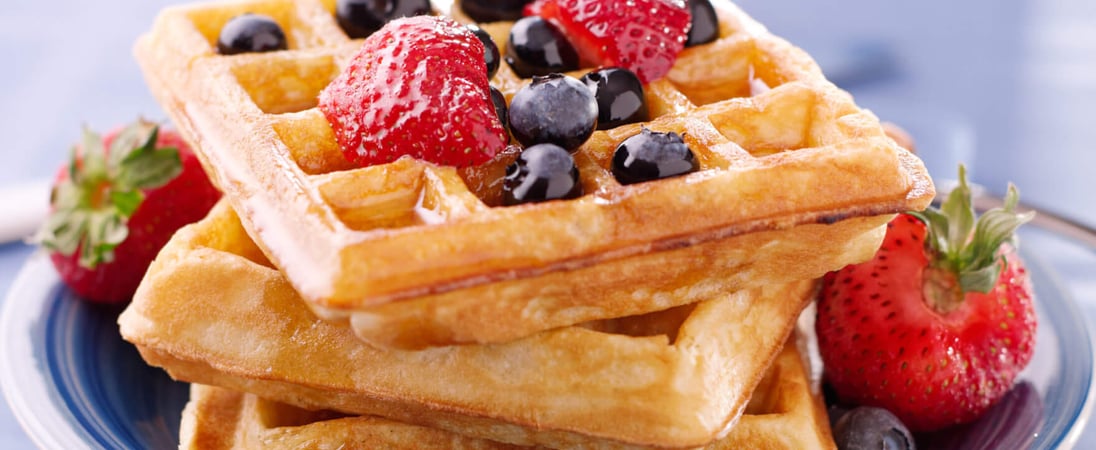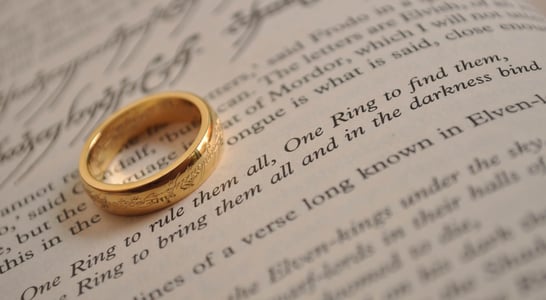
International Waffle Day
Start your day off right with a warm and crispy breakfast treat topped with your favorite fruits, syrups, and whipped cream.
It’s virtually impossible to completely understand the significance of the waffle unless a person has tried one themselves! Waffles are certainly memorable, especially if they are made to perfection: crispy on the outside with a soft, doughy center.
Covered in powdered sugar, sweet syrup, or jam, it’s actually the divots that make the whole thing absolutely melt in the mouth.
This day offers a fun, interesting history that spans cultures and geography. So it’s time to get started celebrating International Waffle Day!
How to Celebrate International Waffle Day
What a fun and easy day to enjoy! It’s uncomplicated and absolutely delicious.
Waffles are an easy treat to make and a yummy one to eat, so be sure to join in on the celebration. Consider these ways to bring attention to this fabulous day:
Try Waffles from Different Cultures
Go on a waffle adventure! Take this day to explore the vast array of flavors that the world of the waffle has to offer:
- Tuck into American waffles topped with fried chicken or, alternatively, stacked and drenched in sugary maple syrup for breakfast. Don’t forget a slice or two of crispy bacon!
- Enjoy a Brussels or Liège Belgian Waffle that is thicker and dusted with confectioner’s sugar or coated in chocolate or cream. The batter is made with egg whites to build volume, and the waffles are sometimes cooked with pearl sugar that adds to the richness and flavor.
- A standard since the 1600s (and the place where the day came from) Swedish waffles are similar to other waffles but are made in special irons that create four heart shapes. These are served with a dollop of cream, fresh berries, or berry compote.
- Or travel east and sample a soft and sweet Hong Kong waffle laced with the flavors of peanut butter or honey melon.
It would be easy to waffle on forever about all of the tasty options that are available when it comes to eating this delicious treat!
Get Waffles at a Restaurant
Many different waffle restaurants offer special deals for an important event such as International Waffle Day! Check out local restaurants to see what they have on offer, such as:
- Waffle House, located in 25 US states, typically offers special deals or coupons for this day.
- International House of Pancakes, with locations in the US, Canada, Ecuador, Mexico, Guatemala, and Peru, offers a Chicken and Waffles plate that is extremely popular.
- Huddle House, a chain throughout the southern US states, has been known to offer a International Waffle Day deal that includes a side of bacon or sausage free with the purchase of waffles.
- Check out other waffle restaurants in nearby locations.
Get Creative with the Waffle Iron
Waffle irons don’t have to be just for basic, boring batter! They can be used to make creative treats such as these:
- Place refrigerated cinnamon roll dough, one in each of the four squares of the iron, close, and cook until done.
- Use different colors of food coloring to turn ho-hum waffles into exciting rainbow fun.
- Pour cupcake batter into the waffle iron and cook as usual. After removing and cooling, create “sandwiches” with canned frosting or ice cream.
- Use normal waffle batter, but add bacon pieces and egg to the middle, top with more batter, and cook. A breakfast waffle sandwich!
History of International Waffle Day
International Waffle Day began in Scandinavia as Våffeldagen. It was actually a bit of a blunder that led to this being waffle day at all.
Although it seems serendipitous now, the original problem was due to confusion between the Swedish “Vårfrudagen” meaning “Our Lady’s Day” which is a religious holiday that falls in late March, 9 months before Christmas.
Over time, the pronunciation for the religious celebration was slurred and eating waffles naturally entered into the picture.
While it developed gradually over time, so no one knows exactly what year it began, waffles have been around in Sweden since at least the 1600s (or longer) so it stands to reason that International Waffle Day is not a modern occurrence.
Now, International Waffle Day is celebrated in not only Sweden but Norway and Denmark, as well as other European countries. The day in March historically marks the beginning of spring and people of other nationalities have begun to adopt the day as well.
The alternative International Waffle Day celebrated on August 24th, began in the United States and honors the anniversary of the patenting of the first US waffle iron in 1869. This waffle iron was invented by Cornelius Swarthout of Troy, New York.
So, as it turns out, waffles are such a popular world-wide phenomenon, that they merit two days in the calendar to celebrate them. But it’s likely that no one is going to complain about that!
Whichever day is picked to honor it, however, the waffle is certainly deserving of celebration. The remarkable dough-based gridded cakes can be eaten for breakfast, lunch, and dinner; as a snack; or for dessert.
(And then there is that whole other business of the potato waffle, a different thing altogether but still tasty in its own right.)
In any case, this day is a great one for learning about and celebrating anything and everything that has to do with waffles!
Waffles at the World’s Fair in New York
A convenient food for eating on the go, Belgian waffles were officially introduced to the American people at the world’s fair in 1964, held in Syracuse, New York.
Maurice and Rose Vermersch and their daughters, a Belgian family, made waffles that were different from American waffles in that they were crispy, fluffy, and airy. The treat was an instant hit and the family served an average of 2500 waffles per day!
These sweet snacks were originally meant to be called ‘Brussels Waffles’, as they are a popular feature in the Belgian capital. But the family quickly realized that most Americans didn’t know where Brussels was, so they settled on ‘Belgian Waffles’. And the name stuck!
International Waffle Day FAQs
Are there any waffle-related myths or urban legends?
One playful myth claims waffles were created by accident when a medieval blacksmith dropped the dough onto a heated metal grate.
The story imagines the surprised blacksmith discovering a crispy, patterned snack instead of ruined dough! Although untrue, it adds a fun twist to waffle history.
Some even say that the grid pattern is inspired by medieval armor or architecture. While these are just legends, they reflect the charm waffles have held for centuries.
What is the strangest type of waffle enjoyed around the world?
Hong Kong serves up bubble waffles, also called egg waffles or gai daan jai. These waffles have round “bubbles” and a soft, custard-like center, often paired with chocolate, ice cream, and fruit.
Japan has taiyaki, a fish-shaped waffle filled with sweet red bean paste or custard. Both are popular street foods and a favorite among locals and tourists.
Why do some people think waffles can predict the weather?
In certain parts of Europe, people once believed that the shape and texture of a waffle could predict the weather.
Round waffles symbolized a sunny future, while crisp, jagged edges were seen as signs of rough weather ahead. Although playful, this superstition sometimes influenced how people viewed each waffle!
How did waffles become a breakfast staple in the U.S.?
Waffles arrived in America with European immigrants, especially the Dutch.
However, they only became a breakfast favorite when manufacturers introduced frozen waffles in the 1950s, making them convenient for busy mornings.
By the 1960s, Eggo’s slogan, “L’eggo my Eggo,” helped cement waffles as an American breakfast icon.
What role did waffles play in early European fairs and festivals?
In medieval Europe, vendors sold waffles as treats during religious festivals, often in the shape of biblical scenes or family crests.
They were popular street snacks and sometimes included honey or dried fruit. This connection to festivals eventually evolved into a wider waffle culture across Europe.
What unique ingredients are used in waffles around the world?
In Belgium, waffles are made with pearl sugar, giving them a caramelized crunch. Scandinavian waffles often include cardamom for a warm, spicy flavor.
In Thailand, pandan leaves lend waffles a unique green color and vanilla-like aroma, adding a regional twist to the classic treat.
Do waffles have any symbolic meanings in other cultures?
In Scandinavian countries, heart-shaped waffles symbolize love and warmth, often served with fresh berries or cream.
In Japan, taiyaki waffles are thought to bring good fortune, especially during New Year’s. These cultural symbols give waffles a deeper, more personal meaning for some.
Why are Belgian waffles typically eaten with dessert toppings rather than syrup?
Belgian waffles have deep, large pockets that are ideal for holding fruit, whipped cream, and chocolate.
The traditional Liège waffle is also sweeter and denser, making it less reliant on syrup. This difference reflects a cultural preference for dessert-like toppings over breakfast-style syrups.
How have waffle recipes changed over time?
Early waffles used only flour and water, cooked on iron grates over an open flame. Over time, people added eggs, milk, and butter for richer flavors.
The modern Belgian waffle, invented in the 19th century, introduced yeast, creating a fluffier texture. Today, new versions include gluten-free, keto, and vegan recipes.
Are there any unusual waffle festivals or events worldwide?
The U.S. hosts several quirky waffle-eating contests during county fairs, with competitors eating as many waffles as they can in record time.
In Norway, Waffle Day celebrates “Vaffeldagen,” where locals compete in making the biggest heart-shaped waffle. Events like these add to the fun, celebrating waffles in unique ways.
Also on ...
View all holidaysTolkien Reading Day
Take a journey through a magical world filled with brave heroes, fierce battles, and unforgettable adventures in a beloved classic series.
Manatee Appreciation Day
Gentle giants of the sea, these lovable creatures spend their days munching on seagrass and swimming in crystal clear waters.




